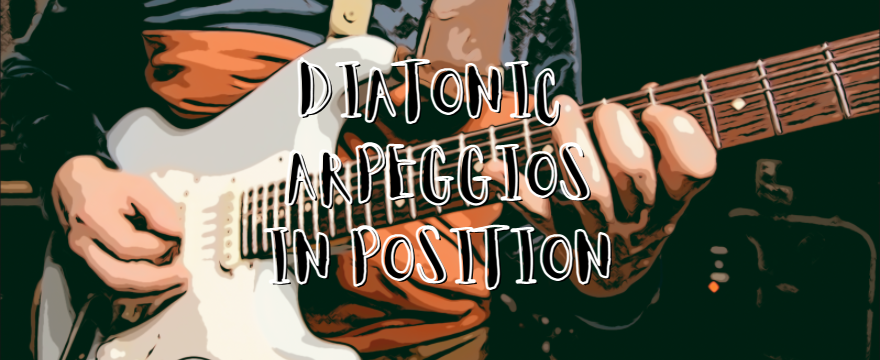Outlining chords in position allows you to see any chord in the key you are in, inside of the larger scale shapes. Because they are all right there in every position!
There are many ways to practice scales, right? What are your go to ways of practicing them?
Ways That I’ve Practiced Scales
One way is that you can play scales straight up and down. This way is great for getting know the scales initially. Also you could play patterns of 3-7 notes at a time, moving up the scale in chunks.
In addition to that you have so many different basic scale patterns you could look at. 3 notes per string? In position with two notes on the 3rd string and 3 on the rest? Horizontally shifting on every other string?
I’ve practiced all of these different ways. And I’ve practiced them A LOT… But playing the chord family, or diatonic chords, in a single position is one of the most helpful ways I’ve every practiced scales.
Outlining chords in position is my favorite way to practice scales.
Because this is on the normal way to practice scales, this ca inspire new playing ideas for you. And if you take some time to work this pattern out you’ll improve your understanding of scales & chords quickly. You will be able to have a better visual understanding of where each chord or arpeggio sits within the larger scale shape.
It’s seriously useful stuff. If you want to break out of playing linear patterns, this can help.
Playing the chord family, or diatonic chords, in one position takes you out of linear mode, and pushes you into vertical playing. I think of vertical playing as anything that doesn’t move sequentially through a scale. So creating soloing ideas from arpeggios, or interval jumps could be two ways of playing vertically.
I try to balance these two approaches when I solo. So because these two ways are complimentary yet distinct, you can use the vertical approach to balance out your linear ideas.

Leave a Reply
You must be logged in to post a comment.